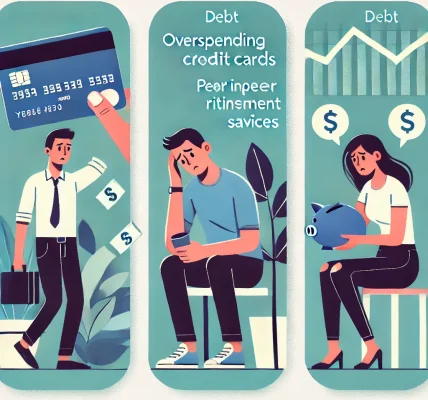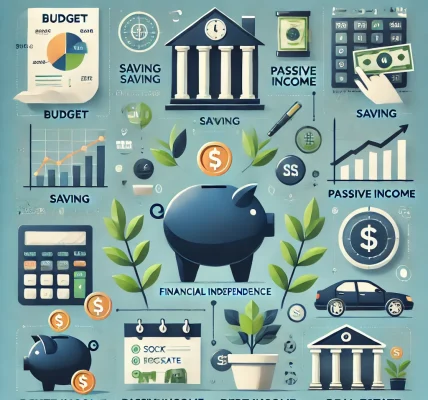Introduction
Managing finances effectively is essential for achieving financial stability and long-term wealth. With the advent of technology, budgeting software has become an indispensable tool for individuals and businesses looking to track expenses, set savings goals, and optimize their financial planning. But with so many options available, choosing the right budgeting software can be overwhelming.
This article provides a comprehensive review of the top budgeting software options available today, helping you determine which one best suits your needs.
Why Use Budgeting Software?
Budgeting software offers several advantages:
- Expense Tracking: Automatically categorizes and tracks your spending.
- Goal Setting: Helps set and achieve financial goals.
- Automated Bill Management: Keeps track of due dates and payments.
- Financial Insights: Provides reports on spending patterns and savings.
- Syncing with Accounts: Connects with bank accounts and credit cards for real-time updates.
- Debt Management: Assists in paying off loans and credit card debt efficiently.
Choosing the right budgeting software depends on your financial needs, whether you’re an individual, a family, or a small business owner.
Top Budgeting Software in 2024
Below is a detailed review of the best budgeting software available, focusing on features, pricing, pros, and cons.
1. Mint – Best for Beginners
Overview: Mint is a free budgeting software owned by Intuit, the makers of TurboTax and QuickBooks. It offers comprehensive personal finance management with automatic expense tracking, budgeting tools, and credit score monitoring.
Key Features:
- Automatic syncing with bank accounts
- Customizable budgeting categories
- Bill tracking and alerts
- Free credit score monitoring
- Investment tracking
Pros: ✔ Free to use ✔ User-friendly interface ✔ Automated expense categorization ✔ Mobile-friendly
Cons: ✘ Advertisements can be intrusive ✘ Limited customer support ✘ No bill payment feature
Best For: Individuals new to budgeting who want a free, easy-to-use platform.
2. YNAB (You Need A Budget) – Best for Hands-On Budgeting
Overview: YNAB follows the zero-based budgeting method, requiring users to assign every dollar to a specific category. It encourages proactive financial planning rather than just tracking expenses.
Key Features:
- Zero-based budgeting approach
- Goal tracking and debt repayment tools
- Bank syncing and manual entry options
- Educational resources and financial workshops
- Secure data encryption
Pros: ✔ Excellent budgeting methodology ✔ No ads, distraction-free ✔ Great customer support ✔ Encourages disciplined spending
Cons: ✘ Requires manual effort initially ✘ Subscription-based ($14.99/month or $99/year) ✘ Learning curve for beginners
Best For: People who want complete control over their budgeting and are committed to proactive financial planning.
3. Personal Capital – Best for Investors
Overview: Personal Capital is a hybrid budgeting and investment management tool. It is best suited for those who want to track their spending while managing investments.
Key Features:
- Comprehensive budgeting dashboard
- Investment portfolio analysis
- Net worth tracking
- Retirement planning tools
- 401(k) and fee analyzer
Pros: ✔ Free budgeting tools ✔ Strong investment tracking capabilities ✔ Retirement planning features ✔ Secure data encryption
Cons: ✘ Investment advisory services require a high minimum balance ✘ Lacks detailed expense categorization compared to Mint ✘ No bill payment feature
Best For: Investors and high-net-worth individuals looking for a mix of budgeting and wealth management.
4. PocketGuard – Best for Overspenders
Overview: PocketGuard focuses on preventing overspending by calculating how much disposable income you have after paying bills and setting aside savings.
Key Features:
- “In My Pocket” feature to show spendable cash
- Automatic bill tracking
- Subscription monitoring and cancellation feature
- Fraud protection
- Bank account integration
Pros: ✔ Helps prevent overspending ✔ Simplifies financial management ✔ Mobile-friendly ✔ Subscription cancellation feature
Cons: ✘ Limited investment tracking ✘ Free version has restricted features ✘ Some users may find it too simplified
Best For: Individuals who struggle with overspending and need a simple, automated budget tracker.
5. GoodBudget – Best for Envelope Budgeting
Overview: GoodBudget is a digital version of the envelope budgeting system, where users allocate money into virtual envelopes for different spending categories.
Key Features:
- Envelope-based budgeting
- Syncing across multiple devices
- Debt tracking tools
- Manual transaction entry
- Financial goal setting
Pros: ✔ Helps users stick to a budget ✔ Simple and intuitive interface ✔ Great for couples and families ✔ Free version available
Cons: ✘ No automatic bank syncing ✘ Manual data entry required ✘ Lacks investment tracking
Best For: Those who prefer envelope budgeting and want to manage finances manually.
How to Choose the Right Budgeting Software
Here are some key factors to consider when selecting budgeting software:
1. Ease of Use
- If you’re new to budgeting, opt for Mint or PocketGuard.
- If you prefer a detailed, hands-on approach, YNAB or GoodBudget are better choices.
2. Automation vs. Manual Control
- For automated tracking, Mint, PocketGuard, and Personal Capital are ideal.
- For more control, YNAB and GoodBudget work well.
3. Integration with Bank Accounts
- Ensure the software supports your bank to avoid manual data entry.
4. Cost and Pricing
- Free options: Mint, Personal Capital (limited features), GoodBudget (basic version).
- Paid options: YNAB, PocketGuard Plus, GoodBudget Premium.
5. Security and Privacy
- Look for encryption and two-factor authentication to protect your financial data.
Conclusion
The best budgeting software for you depends on your financial goals and preferences. Here’s a quick recap:
✔ Mint: Best free option for beginners ✔ YNAB: Best for hands-on, disciplined budgeting ✔ Personal Capital: Best for investment tracking and wealth management ✔ PocketGuard: Best for preventing overspending ✔ GoodBudget: Best for envelope-style budgeting
Budgeting software can transform your financial life by providing clarity and structure. Choose the one that aligns with your needs and start taking control of your money today!
FAQs
1. Can I use multiple budgeting apps?
Yes, but it may become overwhelming. It’s best to find one that meets most of your needs.
2. Are budgeting apps safe?
Reputable apps use bank-level encryption to protect your data. Always check security features before signing up.
3. Is paid budgeting software worth it?
If you need advanced features like zero-based budgeting (YNAB) or investment tracking (Personal Capital), a paid app may be worth the investment.
By choosing the right budgeting software, you can develop better financial habits and achieve your financial goals faster.




